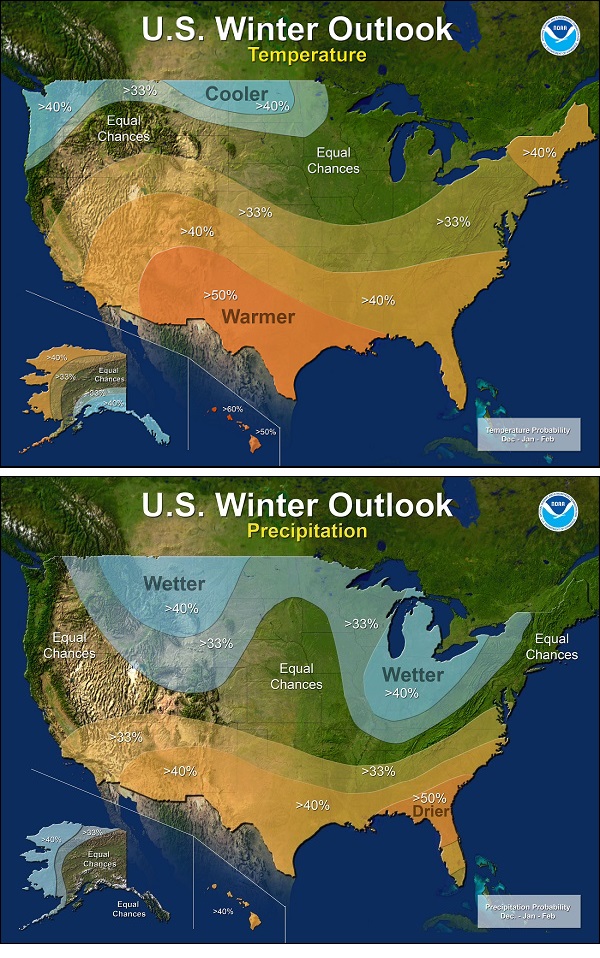
|
|

|
|
| April 26, 2024 |
|
Forecasters predict cooler, wetter North and warmer, drier South 
Love it or hate it, winter is coming.
And just like they do each year, federal forecasters Thursday issued their official predictions for the coldest time of year. A dry, mild winter is likely across most of the southern tier of the U.S. this time around, thanks to a developing La Niña, meteorologists at the National Oceanic and Atmospheric Administration's Climate Prediction Center said. However, parts of the northern tier of the nation could get walloped by a colder and wetter winter, they said. La Niña typically brings above-average precipitation and colder-than-average temperatures along the northern tier of the U.S. and below-normal precipitation and drier conditions across the South, said Mike Halpert, deputy director of the prediction center. As for snow, the climate pattern often dumps greater-than-average snowfall around the Great Lakes and in the northern Rockies and less-than-average amounts in the Mid-Atlantic region, he said. The big snowstorms and blizzards that plague the East Coast tend to be more likely in El Niño winters, Halpert said. Northern Florida and southern parts of Alabama, Georgia and South Carolina are the most likely states to experience a drier-than-average winter. As for unusually wet, and likely snowy, areas, shovels and plows should get plenty of use all winter in Montana, Michigan, Ohio and Indiana. Despite the predicted precipitation, a drought is expected to persist in the northern Plains since the ground tends to be frozen throughout the winter. Most of New Mexico and Texas are likely to get a warmer-than-average winter. La Niña the main factor Overall, La Niña has a 55% to 65% chance of developing before winter sets in, the Climate Prediction Center said last week. “We predict it will be weak and potentially short-lived, but it could still shape the character of the upcoming winter,” Halpert said. La Niña is the cool counterpart to El Niño, which two years ago dominated the winter of 2015-16, the USA's warmest on record. La Niña also dominated last winter, which marked the nation's eighth-warmest on record. The entire natural climate cycle is officially known as the El Niño, Southern Oscillation (ENSO), that swings between warmer and cooler seawater in the tropical Pacific Ocean. The cycle is the primary factor government scientists consider when announcing the winter weather forecast. Other large-scale climate patterns in the atmosphere that can influence winter weather include the Arctic Oscillation, which influences the number of arctic air masses that penetrate into the South and is difficult to predict more than one to two weeks in advance, and the Madden-Julian Oscillation, which can affect the number of heavy rain events along the West Coast. AccuWeather agrees with NOAA that the southern Plains, Southwest and California can expect a milder and drier winter than last season. It also forecast a cold, snowy winter in the Northwest and northern Plains. However, the company thinks a chilly winter is in store for the Northeast and Mid-Atlantic, particularly when compared to last year. "For most of both regions, this will translate to an above-normal snow season," AccuWeather long-range forecaster Paul Pastelok said. AccuWeather also said that after a big snowfall season last year in central and Northern California, both regions are predicted to be less wet and less snowy in the upcoming months. (Source: USA Today) Story Date: October 20, 2017
|